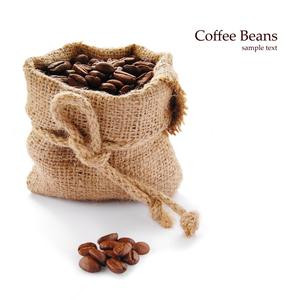Introduction to the varieties of Italian Coffee

Italian Coffee:
Generally brewing Italian coffee at home is made using a mocha pot invented in Italy, which also uses the principle of vapor pressure to quench coffee (another Watt's apprentice). The mocha pot can make the pressurized vapor pass directly through the coffee powder, allowing the steam to pass through the cell wall of the coffee powder (or Hook's apprentice), quenching out the inner essence of the coffee, so the brewed coffee has a strong aroma and strong bitter taste, and a thin layer of coffee oil appears on the surface of the coffee, which is the source of the attractive aroma of Italian coffee.
Cappuccino latte:
Cappuccino coffee is a variation of Italian coffee, that is, strong coffee is poured with steamed milk, and the color of the coffee is like the headscarf on the dark brown coat of cappuccino monks, hence the name caffeine. Latte is actually a change in Italian coffee (Italians are indeed fickle), except that the proportion of coffee, milk and milk foam can be slightly changed to 1:2:1.
Campbell Blue Macchiato Coffee:
Italian coffee is really "a hundred flowers blossom", and there are two flowers, Campbell Blue and Maggie Yadu. As long as you add the right amount of whipped cream to the espresso, you can easily finish a cup of Campbell blue. The fresh white cream floats gently on the deep coffee, just like a white lotus flower that comes out of the mud and is not dyed. In Italian espresso, without whipped cream and milk, only two tablespoons of soft milk foam is a cup of macchiato. Unlike Campbell Blue, if you want to enjoy the delicacy of Macchiato, you have to drink it in one sip.
French Milk Coffee:
The ratio of coffee to milk is 1:1, and when the orthodox French milk coffee is brewed, the milk pot and coffee pot are filled with coffee cups from both sides, which has been going on for hundreds of years. Today, it is still an indispensable drink on the French breakfast table. French baby, full of milk flavor!
Turkish Coffee:
Up to now, the original cooking method is still used, and the complex process is somewhat exotic and mysterious. From it, we can get a glimpse of the heyday of the Ottoman Empire.
Irish Coffee:
There is a strong fragrance of whisky in the name, and the Irish regard whisky as life, and they can't help but tamper with their coffee! Irish coffee made from whisky can better set off the sweet and sour taste of coffee. A hint of mature melancholy. Be careful, you will get drunk even if you drink too much coffee!
Mocha Coffee:
Guys who love chocolate, this is for you! Remember the Italian latte? Add chocolate to it and make a rich mocha.
Royal Coffee:
This excellent dish was invented by an emperor who could fight a long war. by the way, he was Napoleon, the emperor of the French Empire! He doesn't like the smell of milk, he likes the pride of France-brandy! Another guy with spirits in his coffee! The blue flame dances with the mellow aroma of brandy and the scorching aroma of square sugar, and then with a strong aroma of coffee, slightly sweet in bitterness. French arrogance, French romance.
Green tea, coffee:
The fragrance of green tea draws our attention back from a distant country. Japan is a nation that is good at absorption and integration. This time, they have found a balance between western coffee and eastern green tea. It also provides a new favorite for friends who love drinking tea. This is a pure Oriental flavor of coffee, the elegant fragrance of green tea, the rich exchange of coffee agitation.
Iced latte:
We have to mention lattes again. Is it too attractive, or is it too romantic? Use the mixture of fructose and milk to increase the specific gravity of milk, so that it will not be mixed with lighter coffee, forming two distinct layers of black and white, forming a graceful visual effect like a cocktail, plus ice cubes, giving people an elegant and romantic warm feeling.
Magic ice cream coffee:
This magic taste full of creativity and variety only belongs to the young you! Pour espresso on the cold Vanilla Ice Cream, then use chocolate sauce to freely compose the fresh cream and ice cream. The ice coffee is a magical blend of water and milk, leaving only fragrance and freshness in your mouth.
Mocha Frost Coffee:
Guys who love chocolate, do you still have an appetite to try the "frost" chocolate mocha? Use a blender to break ice cubes and ice cream to create a dense visual effect, then add mocha iced coffee, and you're done! The entrance is smooth, refreshing and mellow, giving you a cool afternoon in the heat of summer.
Important Notice :
前街咖啡 FrontStreet Coffee has moved to new addredd:
FrontStreet Coffee Address: 315,Donghua East Road,GuangZhou
Tel:020 38364473
- Prev

"Espresso" means "express" or "fast" in Italian
Espresso means express delivery or express in Italian. Italian coffee is called the root of good coffee. Although the reputation of Italian coffee belongs to Italy, the first Italian coffee machine was simply tried in France, but as we know today, it was successfully developed by the Italians. In Italy, the price of a cup of Italian coffee is controlled by the government.
- Next

The practice of fancy Coffee General knowledge of fine coffee production
Viennese coffee ingredients: one cup of hot coffee, right amount of fresh cream, right amount of chocolate syrup, a little colorful chocolate rice, sugar packet. Practice: a cup of hot coffee is about 8 minutes full, whirled with whipped cream, sprinkled with appropriate amount of chocolate syrup, sprinkled with colorful chocolate fruit and served with sugar. Features: this famous coffee from Austria has a three-stage variation.
Related
- Beginners will see the "Coffee pull flower" guide!
- What is the difference between ice blog purified milk and ordinary milk coffee?
- Why is the Philippines the largest producer of crops in Liberia?
- For coffee extraction, should the fine powder be retained?
- How does extracted espresso fill pressed powder? How much strength does it take to press the powder?
- How to make jasmine cold extract coffee? Is the jasmine + latte good?
- Will this little toy really make the coffee taste better? How does Lily Drip affect coffee extraction?
- Will the action of slapping the filter cup also affect coffee extraction?
- What's the difference between powder-to-water ratio and powder-to-liquid ratio?
- What is the Ethiopian local species? What does it have to do with Heirloom native species?

